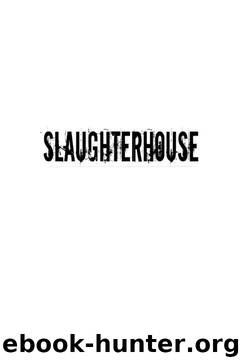Slaughterhouse: The Shocking Story of Greed, Neglect, and Inhumane Treatment Inside the U.S. Meat Industry by Gail A. Eisnitz

Author:Gail A. Eisnitz [Eisnitz, Gail A.]
Language: eng
Format: epub
Published: 2009-07-17T04:42:00+00:00
"Streamlined Inspection didn't formally affect line speeds," said GAP's Tom Devine. "Rather, at these plants inspectors were stripped of their ability to detect conditions that would justify stopping the line." By removing the greatest obstacle to production-the inspectors' authority-USDA officials could enable the pilot plants to double and even triple their line speeds.
By 1985, when Streamlined Inspection was implemented in poultry plants nationwide, 450 fewer USDA poultry inspectors were examining a billion and a half more birds than ten years earlier. Inspectors who in the 1960s had examined eighteen birds per minute were now required to inspect up to thirty-five birds per minute-fifteen thousand a day. They were provided roughly one and a half seconds to examine each bird inside and out-theoretically inspecting both the carcass and viscera* for twelve different diseases and a host of abnormalities.
Without authority over contamination, inspectors could no longer reinspect feces-covered chickens at the end of the line. When they came across "trimmable conditions" such as lesions or broken bones, they were no longer permitted to oversee the trimming process. And while in theory poultry inspectors could still condemn diseased birds, the new regulations prevented them from ensuring that condemned birds were actually taken off the line.
Download
This site does not store any files on its server. We only index and link to content provided by other sites. Please contact the content providers to delete copyright contents if any and email us, we'll remove relevant links or contents immediately.
Life 3.0: Being Human in the Age of Artificial Intelligence by Tegmark Max(5472)
The Sports Rules Book by Human Kinetics(4288)
The Age of Surveillance Capitalism by Shoshana Zuboff(4206)
ACT Math For Dummies by Zegarelli Mark(3982)
Unlabel: Selling You Without Selling Out by Marc Ecko(3587)
Blood, Sweat, and Pixels by Jason Schreier(3564)
Hidden Persuasion: 33 psychological influence techniques in advertising by Marc Andrews & Matthijs van Leeuwen & Rick van Baaren(3472)
The Pixar Touch by David A. Price(3361)
Bad Pharma by Ben Goldacre(3350)
Urban Outlaw by Magnus Walker(3338)
Project Animal Farm: An Accidental Journey into the Secret World of Farming and the Truth About Our Food by Sonia Faruqi(3174)
Kitchen confidential by Anthony Bourdain(3006)
Brotopia by Emily Chang(3000)
Slugfest by Reed Tucker(2936)
The Content Trap by Bharat Anand(2859)
The Airbnb Story by Leigh Gallagher(2797)
Coffee for One by KJ Fallon(2559)
Smuggler's Cove: Exotic Cocktails, Rum, and the Cult of Tiki by Martin Cate & Rebecca Cate(2468)
Beer is proof God loves us by Charles W. Bamforth(2368)
